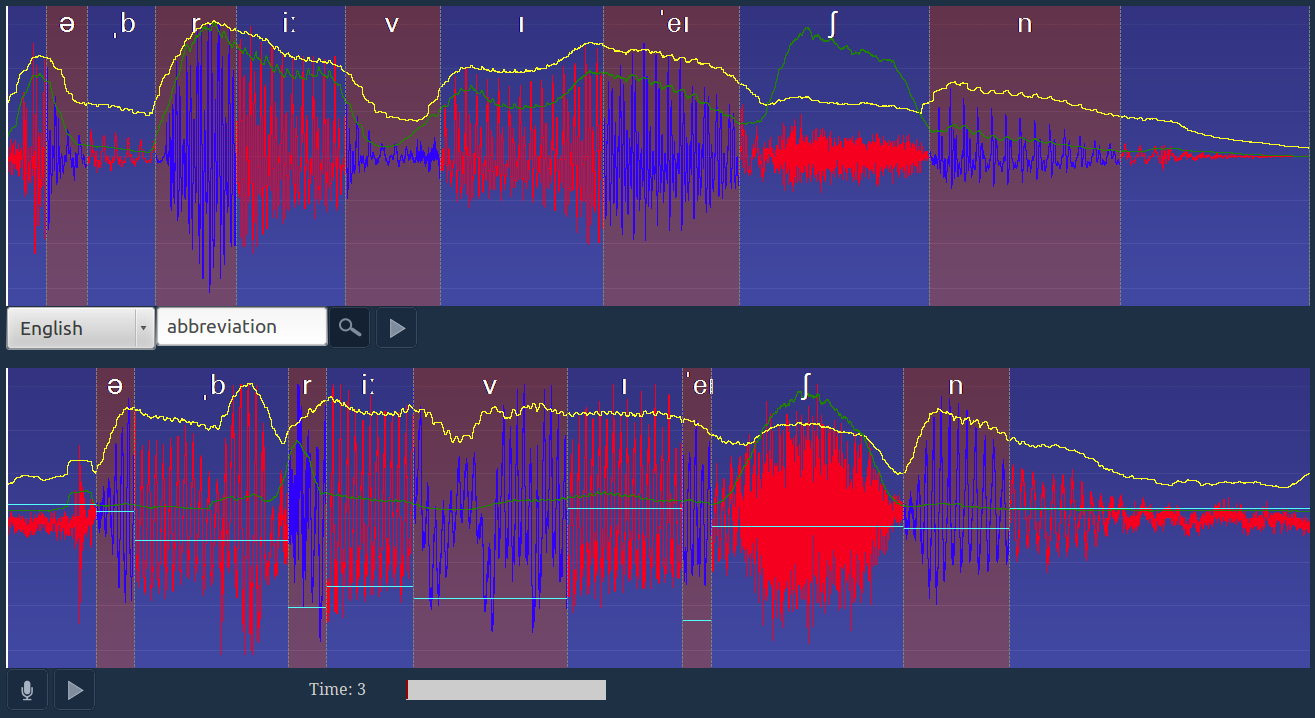Correct pronunciation in foreign languages is key for successful oral communication. Pronunciation practising requires either an experienced teacher who will spot and point out pronunciation mistakes or it can be done by listening to the student's self-recorded pronunciation audio and comparing it to a native speaker's pronunciation audio. However, such comparison may be complicated by unknown phonemes perceived as similar, the learner's inability to distinguish between different phonemes or the habit of constantly pronouncing the same letter differently (caused by the student's native language). Our tool therefore facilitates the detection of differences in recorded pronunciation by displaying audio waveform charts with several curves describing certain features of pronunciation. Mistakes in pronunciation usually cause some of these curves to differ significantly.
The pronunciation waveform chart is divided into intervals corresponding to individual phonemes and silence at the beginning and the end. Intervals are labelled by corresponding phonemes. The native speaker chart contains three curves. The sound wave switches the color between blue and red at phoneme boundaries. It is the most prominent curve of the chart and allows you to recognize vowels, some consonants and the boundaries of syllables. The energy curve is yellow and facilitates in particular the recognition of accents (stresses). The curve of the cumulative difference is green and allows to recognize parts of the sound containing high frequencies and noise. While playing, a cursor shows the currently played part in the pronunciation chart. The user pronunciation chart has one more curve added -- it shows how comprehensible the user's phoneme pronunciation is compared to the native speaker's pronunciation of the corresponding phoneme. It is cyan and the closer the line is to center of the chart, the better. If it moves down to the bottom half of the chart, it means that the student's pronunciation is less comprehensible than that of a native speaker.

This tool is available as a separate web application or as supporting libraries for MS Windows and Linux. The presentation part was also ported to Android and iOS.